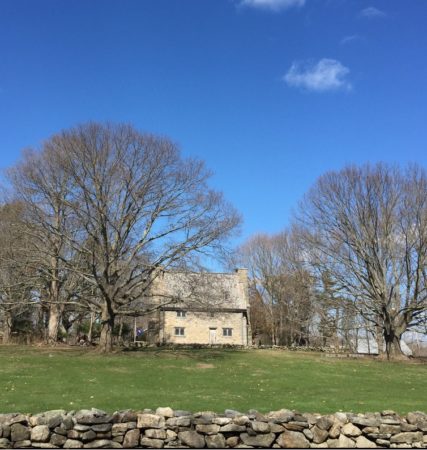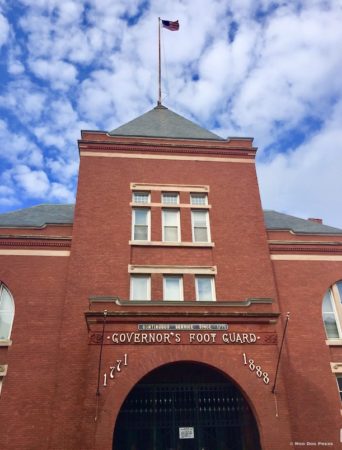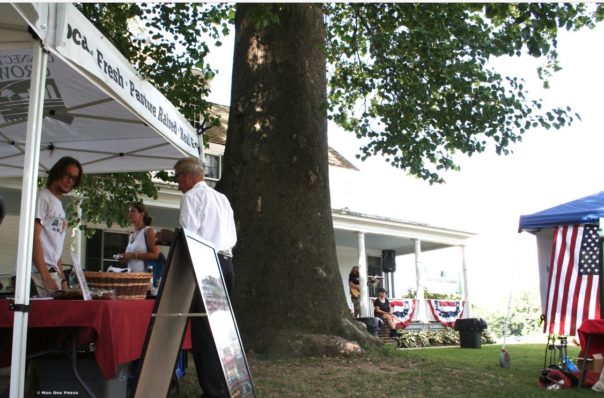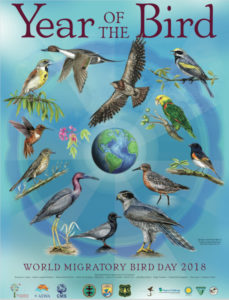Observations & Connecticut Places: History, Cities + ‘Year of the Bird’
“While you are looking, you might as well also listen, linger and think about what you see.” – Jane Jacobs
Notice. Look. Walk. Observation skills will sharpen with practice and going new places – even nearby. Town greens are a great starting point; so are Main Streets. Park your car, get out and go. Take a small notebook or tap notes into your smart phone to look up later.

The Connecticut River at Tylerville and East Haddam. Note just how many human activities can be spotted in this image – recreational boating to aviation; a father and child out strolling; Goodspeed Opera House and the engineering of a bridge that swings open. Also a great site for spotting birds. CB/MDP
“Connecticut's oldest house and New England's oldest stone house” the Henry Whitfield State Museum is open 10 a.m. to 4:30 p.m., Wednesday to Sunday. Last tickets sold at 4 p.m. each day. (Closed Monday/Tuesday.) Also nearby, Guilford Green, a good place to walk. Small businesses and interesting architecture abound here.

Waiting for you – Connecticut's oldest house and New England's oldest stone house – Henry Whitfield State Museum, Guilford.
“Since 1899, the Henry Whitfield State Museum has been owned and operated by the State of Connecticut. Restored by noted architects Norman Isham and J. Frederick Kelly in the early 1900s, the house is an important example of Colonial Revival restoration work. For over 115 years, visitors from around the world have explored this unique site and learned not only the history of the Henry Whitfield House but the story of the English settlement of Connecticut and the coming together of the European and Native American cultures.” – www.cultureandtourism.org

Governor's Foot Guard building, Hartford. “Continuous service since 1771” – small sign on the front.
A great read about places and seeing aspects of life that otherwise may be missed – Eyes on the Street: The Life of Jane Jacobs by Robert Kanigel.
“Jane Jacobs was astonishingly well read, an intellectual by any definition you cared to use, a deep and determined thinker, but she got there by a decidedly unorthodox path.” – from the book, page 12.
For a Fresh Air review of the book via NPR by Maureen Corrigan (2016), here's the link; or Google what others have written about this book – a gem that captures the essence of a life that made things happen (not without controversy).
“…telling the story of how she turned her eyes to the street and where her glance took her.” – Gothamist review

Community, architecture, people doing business, history, markets – micro to macro. Every species from trees to birds and humans – part of the culture of place.
Of interest to those who love to travel near or far – and for anyone who appreciates the character of a community, architecture, history, businesses – turns out that what makes a place different from another is also good for local and regional economies.
“Designing a dream city is easy; rebuilding a living one takes imagination.” – Jane Jacobs
The Statewide Historic Preservation Conference, hosted by CT State Historic Preservation Office, is Wednesday, May 16, 8:30 a.m. to 4 p.m., Sheraton Hartford South Hotel, 100 Capital Boulevard, Rocky Hill. General admission, $25.
Keynote speaker is Carla Bruni, associate for engagement, PlaceEconomics.Under the theme of Shared Stewardship, the conference will explore ways communities, governments and advocates can engage new participants and reinforce partnerships to enhance our state through historic preservation. Connecticut residents, staff of municipal and regional governments, planners, students, and people interested in the state's cultural heritage are encouraged to attend. General admission fee; then register for one breakout session in each afternoon grouping. Topics/speakers include: The Edge of History: Using the Past to Bring Relevance to the Present; Leah Glaser, president, CT Preservation Action; scholarship awards. A Guide to the Standards for the Treatment of Historic Properties and the Importance of Historic Property Stewardship. Stewardship Outside: Opportunities to Recognize our Historic Landscapes. Theory to Practice: New Approaches to Community Engagement. Breakout sessions include: Beyond the COA: Broadening the Impact of Preservation in Local Governance. Tech Talks: New Technologies in Preservation. Can We Future-Proof the Past? Ask the State's Resilience Team.
Note: 6.5 AICP CM credits available. AIA Connecticut members may self-report continuing education hours for this conference. Search #CTSHPO2018 or #CTsharedstewardship on Facebook and Twitter.
Don't take mobility for granted, nor the gift that is sight. Here's part of an ongoing effort to connect local to regional and world science – birds and migrations.
“In 1993, the Smithsonian Migratory Bird Center created International Migratory Bird Day. This educational campaign focused on the Western Hemisphere and celebrates its 25th year in 2018. Since 2007, IMBD has been coordinated by EFTA, a non-profit organization that strives to connect people to bird conservation.” – Environment for the Americas (EFTA).
“In 2018, EFTA joins the Convention on Migratory Species (CMS) and the Agreement on the Conservation of African-Eurasian Migratory Waterbirds (AEWA) to create a single, global bird conservation education campaign, World Migratory Bird Day (WMBD). Continuing our tradition with IMBD, WMBD celebrates and brings attention to one of the most important and spectacular events in the Americas – bird migration. In December, 2017, EFTA formalized an innovative partnership with the Convention on Migratory Species and the Agreement on the Conservation of African-Eurasian Migratory Waterbirds.
“This new alliance will further migratory bird conservation around the globe by creating a worldwide campaign organized around the planet’s major migratory bird corridors, the African-Eurasian, the East Asian-Australasian, and the Americas.
“By promoting the same event name, annual conservation theme, and messaging, we combine our voices into a global chorus to boost the urgent need for their conservation. EFTA will continue to focus its efforts on the flyways in the Americas to highlight the need to conserve migratory birds and protect their habitats, which range from Canada to Argentina to the Caribbean. When is WMBD? Because birds do not migrate on the same day, WMBD is celebrated on different dates across the Western Hemisphere. Events take place year-round, though most occur around the “traditional” date on the second Saturday in May (May 14, 2016) or in October in Latin America and the Caribbean.”
People worldwide will participate in World Migratory Bird Day Saturday, May 12. In Connecticut, there will be an early morning bird walk sponsored by CT DEEP Wildlife Division at the Belding Wildlife Management Area, Vernon, 8 a.m. Learn to identify birds by sight and sound. Directions: Route 84 to exit 66 towards Bolton Road. Right onto Bolton Road for 1 mile. Right onto Bread and Milk Road. No registration required. For information, call Jane Seymour (860) 306-5418; email Jane.seymour@ct.gov.
For more about migratory birds in Connecticut, visit http://www.audubon.org/news/birding-connecticut. The site also lists information about species in other states; just search for the area you are most interested in.
From the site: “We never need a reason to celebrate birds here at Audubon, but in 2018 we’re making an especially big deal of them. That’s because not only is it the 100th anniversary of the signing of the Migratory Bird Treaty Act (MBTA) — a pivotal piece of legislation that continues to save countless birds’ lives — but birds are also facing many new and serious threats, including attacks on the MBTA itself. And so it’s with great excitement that we’ve teamed up with National Geographic, BirdLife International, and the Cornell Lab of Ornithology to officially make 2018 the Year of the Bird.”




